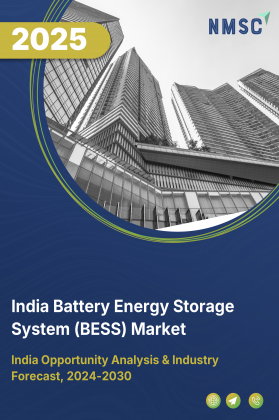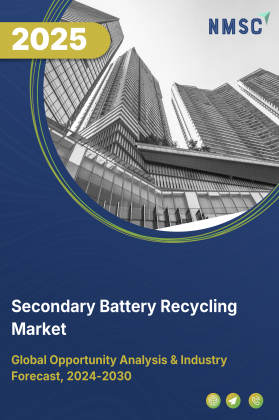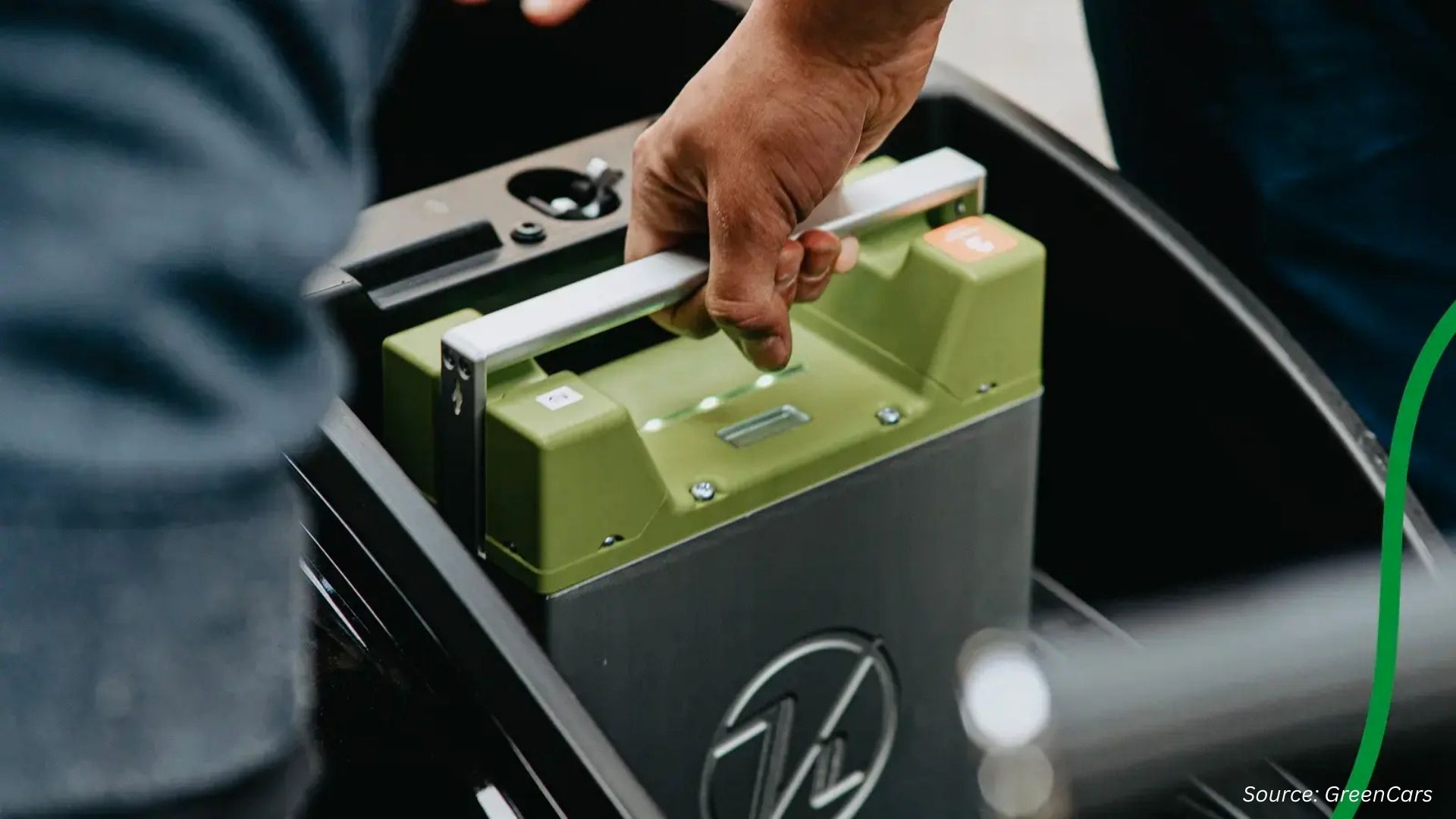
Energy Storage Infrastructure Market by Storage Type (Batteries, Flywheel, Pumped Hydro Power, Molten Salt and Others), by Applications (Energy Arbitrage, Black Start, Frequency Regulation, Renewable Energy, Electric Vehicles and Others) and by End-Users (Industrial, Commercial, Residential) – Global Opportunity Analysis and Industry Forecast, 2024 – 2030
Energy Storage Infrastructure Market Overview
The global Energy Storage Infrastructure Market size was valued at USD XX billion in 2023 and is predicted to reach USD XX billion by 2030 with a CAGR of YY% from 2024-2030.
The energy storage infrastructure market refers to the development and implementation of systems designed to store energy generated from various sources such as renewable energy and grid power for future use cases. This infrastructure system includes a variety of storage technologies such as batteries, flywheel, and pumped hydro power that are customized for different applications ranging from residential energy storage to large-scale grid solutions.
The primary advantage of these energy storage system is to enhance the reliability and efficiency of energy systems by balancing supply and demand, reducing reliance on fossil fuels, and supporting the widespread adoption of renewable energy sources.
These energy storage facilities stabilize the grid, optimizes energy usage, and promotes sustainable energy practices by storing excess energy generated during periods of low demand and releasing it when needed.
Therefore, the growing demand for reliable and sustainable energy solutions is fueling significant expansion in the market, accelerated by the need for greater energy efficiency and the global shift toward renewable energy sources.
Market Dynamics and Trends
The rising electricity consumption globally across residential, commercial and industrial sectors due to population growth drives the need for efficient energy storage solutions as it helps to balance peak demand and improve energy efficiency.
As per the report published by International Energy Agency (IEA) in 2024, the global electricity demand grew by 2.2% in 2023 and is expected to increase 3.4% by the year 2026. Thus, the surge in electricity demand during the peak periods facilitates the use of energy storage system to balance the supply and reduce strain on the grid creating a greater need for its expansion.
Moreover, increasing adoption of electric vehicles (EV) is driving demand for efficient energy storage solutions to support EVs energy needs and charging infrastructure. As per the Global EV Outlook report 2024, global EV car sales accounted to 14 million in 2023, marking an increase of 35% from 2022. Subsequently, this rapid growth in EV sales accelerates market expansion driven by increased electricity demand for charging and need for grid upgradation.
Additionally, the growing adoption of renewable energy sources such as wind, solar and hydropower across industrial, commercial and residential sectors propels the energy storage infrastructure market expansion. This shift is propelled by the need to reduce carbon emissions and promote sustainability. The expansion and enhancement of energy storage systems is essential to support the growing deployment of renewable energy, ensuring a stable, reliable, and sustainable energy supply.
As per July 2024 report published by the International Renewable Energy Agency (IRENA), renewable energy consumption in the U.S. residential sector increased to 26% in 2022 from 25% in 2021. In contrast, China’s residential sector maintained a steady growth of 37% renewable energy consumption for both years.
Consequently, the growing use of renewable energy sources requires robust energy storage systems to store excess energy, further accelerating the market growth. However, government regulations associated with the installation of services hinders the overall energy storage infrastructure market growth.
On the contrary, ongoing research and development in battery technologies such as solid-state batteries creates an ample growth opportunity for the market in future. Solid-state batteries are at the forefront of next-generation energy storage as these batteries employ solid electrolytes instead of liquid.
These batteries help to store more energy in limited space, preventing risk of leaks and fires. Such growing need for advancements in battery technologies creates significant potential for the widespread adoption of energy storage infrastructures.
Market Segmentations and Scope of the Study
The energy storage infrastructure market report is segmented on the basis of storage type, applications, end-users, and region. On the basis of storage type, the market is segmented into batteries, flywheel, pumped hydro power, molten salt and others. On the basis of applications, the market is segmented into energy arbitrage, black start, frequency regulation, renewable energy, electric vehicles and others.
On the basis of end-users, the market is distributed into industrial, commercial, residential. The regional breakdown includes regions such as North America, Europe, Asia-Pacific, and the Rest of the World (RoW).
Geographical Analysis
Asia-Pacific dominates the energy storage infrastructure market share and is expected to continue its dominance during the forecast period. This is attributed to the growing adoption of battery energy storage system for reliable and efficient energy storage solutions.
For instance, in May 2024, China launched its pioneering sodium-ion battery energy storage station in Nanning that exhibits superior energy conversion efficiency. Consequently, the large-scale deployment of storage system enhances performance and reliability marking a significant milestone in the global transition towards sustainable energy solutions.
Moreover, rising government initiatives in this region for the development and deployment of energy storage systems (ESS) to reduce carbon emissions and meet climate goals is propelling the market growth. The increased regulations in storage technologies to complement renewable energy projects enhance grid stability and meet requirements for clean energy integration.
For example, in October 2023, Indian government published a framework for energy storage systems to promote adoption of energy storage in power sector. Subsequently, such government initiatives encourage utilities to invest in energy storage that enhances grid reliability and supports renewable energy integration.
On the other hand, North America is the fastest growing region in the energy storage infrastructure industry owing to increasing demand of pumped storage hydropower (PSH) as it provides long duration energy solution.
These PSH offers cost-effective solutions for storing energy over extended periods, supporting grid resilience. For instance, a report published by U.S. Department of Energy in 2023, pumped storage hydropower accounted 96% of all utility-scale energy storage in the U.S. Thus, the sustainable and conventional solution of storing energy on a large scale with minimal environmental repercussions is expected to propel the market growth.
Also, rising research and testing facilities for development of cutting-edge energy storage solutions is driving the market growth. This initiative drive innovation in the energy storage market attributing to commercialization of advanced storage solutions enhancing grid stability and meeting the rising energy demands.
For example, in August 2024, the U.S. Department of Energy launched advanced energy storage research and testing facility aimed at enhancing energy storage technologies. Therefore, such initiatives play a crucial role in advancing energy storage solutions that help meet energy demands and enhance grid resilience.
Competitive Landscape
Various key market players operating in the energy storage infrastructure industry are Schneider Electric SE, Exide Industries, BYD Company Ltd., ABB Ltd., Samsung SDI Co. Ltd., Panasonic Holdings Corporation Ltd., Siemens AG, LG Energy Solution Ltd., Celltech Group, SAFT, and others.
These market players continue to adopt various market development strategies including product launches and partnerships to maintain their dominance in the market .For instance, in April 2024, Schneider Electric SE launched BESS for microgrids to enhance energy resilience and efficiency. This captures and stores energy from various onsite sources, providing solution for energy security amid climate challenges.
Additionally, in March 2024, Panasonic partnered with Indian Oil Corporation limited (IOCL) for the development of lithium-ion-cells to facilitate India’s transition to clean energy. This development is gaining momentum with robust demand from both electric vehicles and battery energy storage systems.
Also, in January 2024, BYD Company Ltd. partnered with Grenergy for the supply of 1.1 GWh of energy storage batteries to support integration of renewable energy into grid. This partnership significantly influences the energy storage market driving technological advancements, investments and regulatory support.
Key Benefits
-
The report provides quantitative analysis and estimations of the energy storage infrastructure industry from 2024 to 2030, which assists in identifying the prevailing industry opportunities.
-
The study comprises a deep-dive analysis of the current and future energy storage infrastructure market trends to depict prevalent investment pockets in the industry.
-
Information related to key drivers, restraints, and opportunities and their impact on the energy storage infrastructure industry trend is provided in the report.
-
Competitive analysis of the key players, along with their market share is provided in the report.
-
SWOT analysis and Porters Five Forces model is elaborated on the study.
-
Value chain analysis in the market study provides a clear picture of roles of stakeholders.
Energy Storage Infrastructure Market Key Segments
By Storage Type
-
Batteries
-
Flywheel
-
Pumped Hydro Power
-
Molten Salt
-
Others
By Applications
-
Energy Arbitrage
-
Black Start
-
Frequency Regulation
-
Renewable Energy
-
Electric Vehicles
-
Others
By End-User Industry
-
Industrial
-
Commercial
-
Residential
By Region
-
North America
-
The U.S.
-
Canada
-
Mexico
-
-
Europe
-
The UK
-
Germany
-
France
-
Italy
-
Spain
-
Denmark
-
Netherlands
-
Finland
-
Sweden
-
Norway
-
Russia
-
Rest of Europe
-
-
Asia-Pacific
-
China
-
Japan
-
India
-
South Korea
-
Australia
-
Indonesia
-
Singapore
-
Taiwan
-
Thailand
-
Rest of Asia-Pacific
-
-
RoW
-
Latin America
-
Middle East
-
Africa
-
Report Scope and Segmentation
|
Parameters |
Details |
|
Market Size in 2023 |
USD XX Billion |
|
Revenue Forecast in 2030 |
USD XX Billion |
|
Growth Rate |
CAGR of YY% from 2024 to 2030 |
|
Analysis Period |
2023–2030 |
|
Base Year Considered |
2023 |
|
Forecast Period |
2024–2030 |
|
Market Size Estimation |
Billion (USD) |
|
Growth Factors |
|
|
Countries Covered |
28 |
|
Companies Profiled |
10 |
|
Market Share |
Available for 10 companies |
|
Customization Scope |
Free customization (equivalent up to 80 working hours of analysts) after purchase. Addition or alteration to country, regional, and segment scope. |
|
Pricing and Purchase Options |
Avail customized purchase options to meet your exact research needs. |
Key Players
-
Schneider Electric SE
-
Exide Industries
-
BYD Company Ltd.
-
ABB Ltd.
-
Samsung SDI Co. Ltd.
-
Panasonic Holdings Corporation Ltd.
-
Siemens AG
-
LG Energy Solution Ltd.
-
Celltech Group
-
SAFT

















 Speak to Our Analyst
Speak to Our Analyst

























